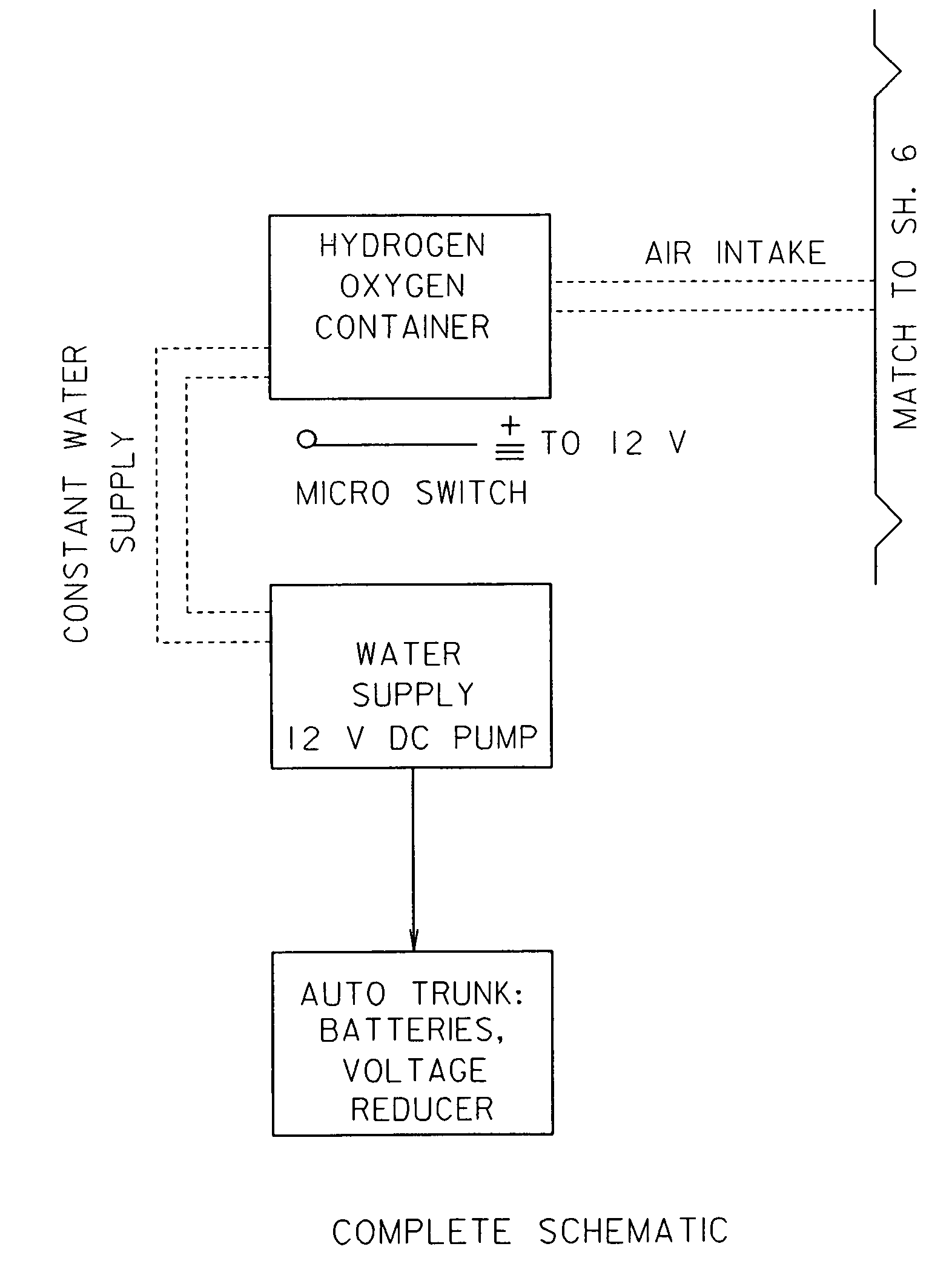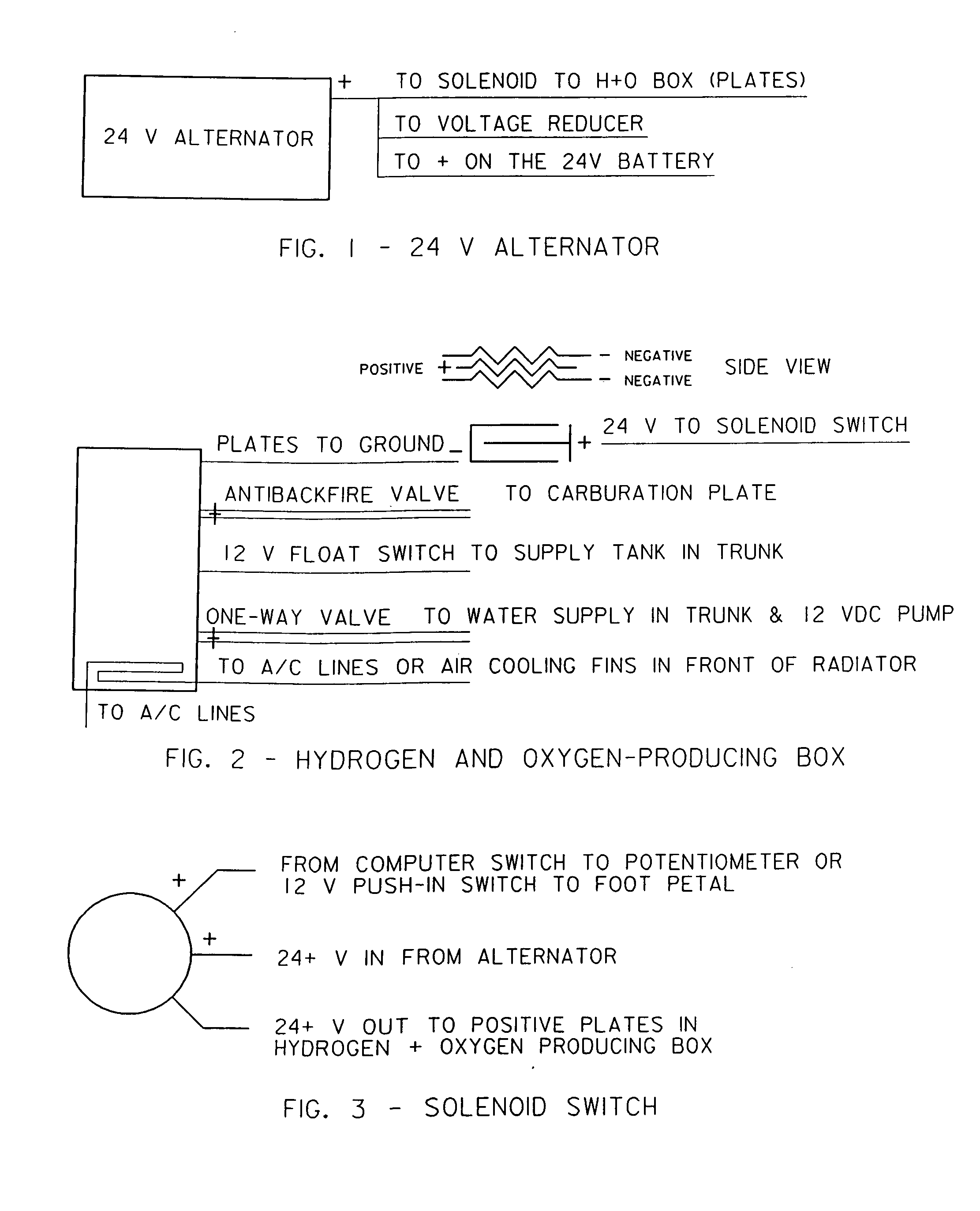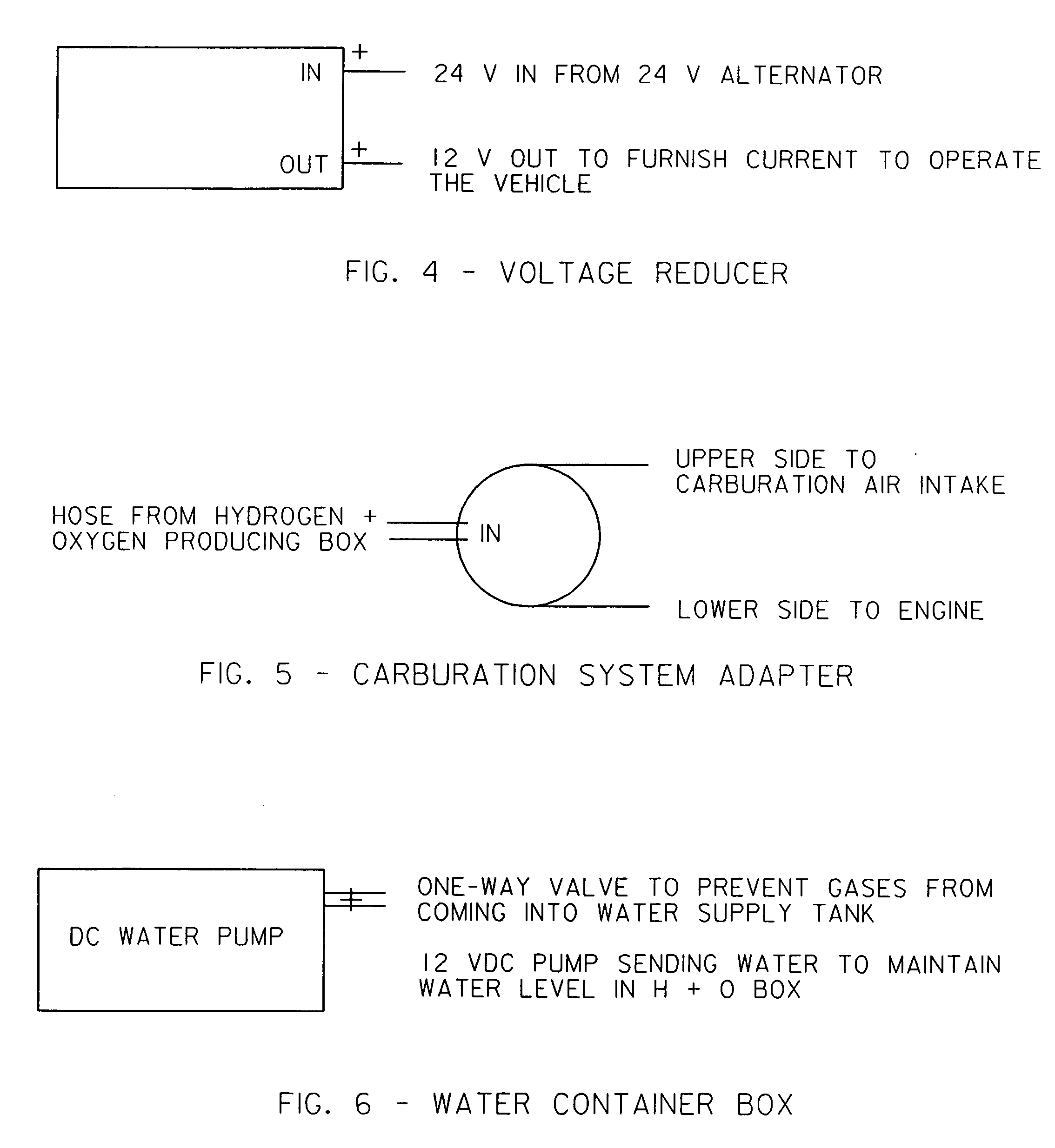Water fuel convertor
a conversion device and water fuel technology, applied in the field of water fuel conversion devices, can solve the problems of heavy fuel containers, complicated gaseous fuel introduction, and inability to build hydrogen-refueling stations in the country, and achieve the effect of high percentage increase in fossil fuel mileage of vehicles
- Summary
- Abstract
- Description
- Claims
- Application Information
AI Technical Summary
Benefits of technology
Problems solved by technology
Method used
Image
Examples
Embodiment Construction
[0015] Process to use water, methyl alcohol and baking soda to make hydrogen and oxygen to increase fuel mileage on gasoline, diesel and LP gas engines, using the process generally known as electrolysis with many modifications. [The baking soda and methyl alcohol are inexpensive and readily available.]
[0016] Build a ‘stack’ of plates [3, 5, or 7] or as many as necessary to produce the amount of fuel, hydrogen and oxygen gases, needed to run and or supplement the gasoline mileage by as much as 25%, up to 1,000% percent or any variation in between.
[0017] The plates being made of perforated stainless steel or any different metal that will not oxidize or react negatively when using the electrolyte solution mentioned above, as the 1st, 3rd, 5th, etc in this manner. The anode plates may be made of any non-oxidizing, conductive metal that will not contaminate the solution or plates to control the temperature. The plates may have different size perforated holes from 0.0125 to 0.125 inches ...
PUM
 Login to View More
Login to View More Abstract
Description
Claims
Application Information
 Login to View More
Login to View More - R&D
- Intellectual Property
- Life Sciences
- Materials
- Tech Scout
- Unparalleled Data Quality
- Higher Quality Content
- 60% Fewer Hallucinations
Browse by: Latest US Patents, China's latest patents, Technical Efficacy Thesaurus, Application Domain, Technology Topic, Popular Technical Reports.
© 2025 PatSnap. All rights reserved.Legal|Privacy policy|Modern Slavery Act Transparency Statement|Sitemap|About US| Contact US: help@patsnap.com



